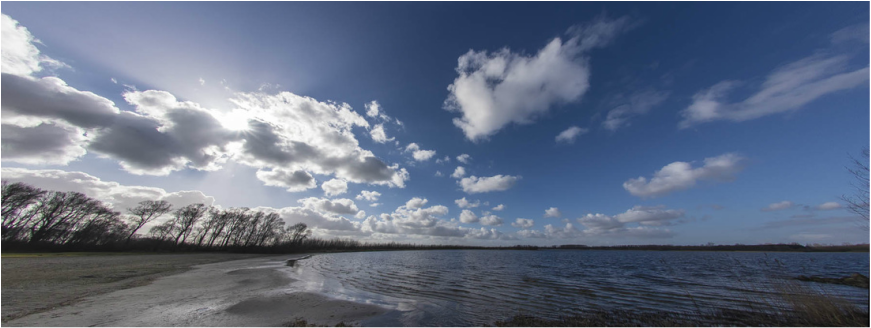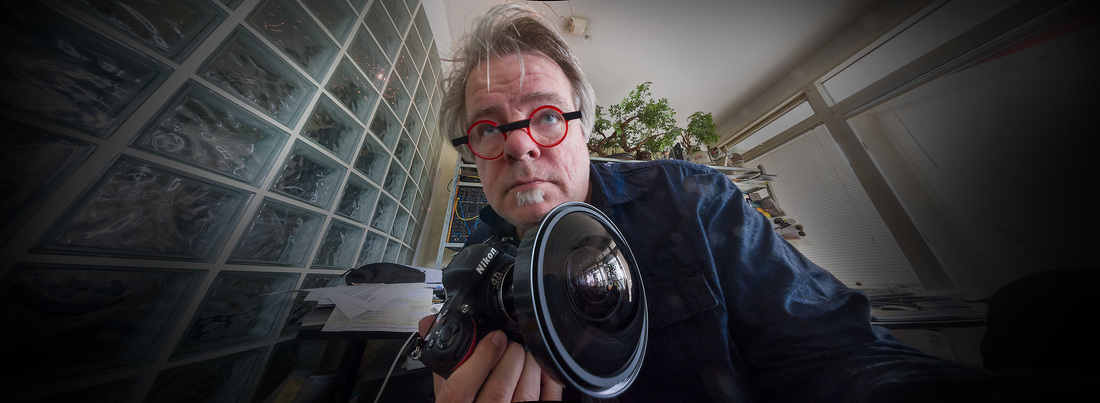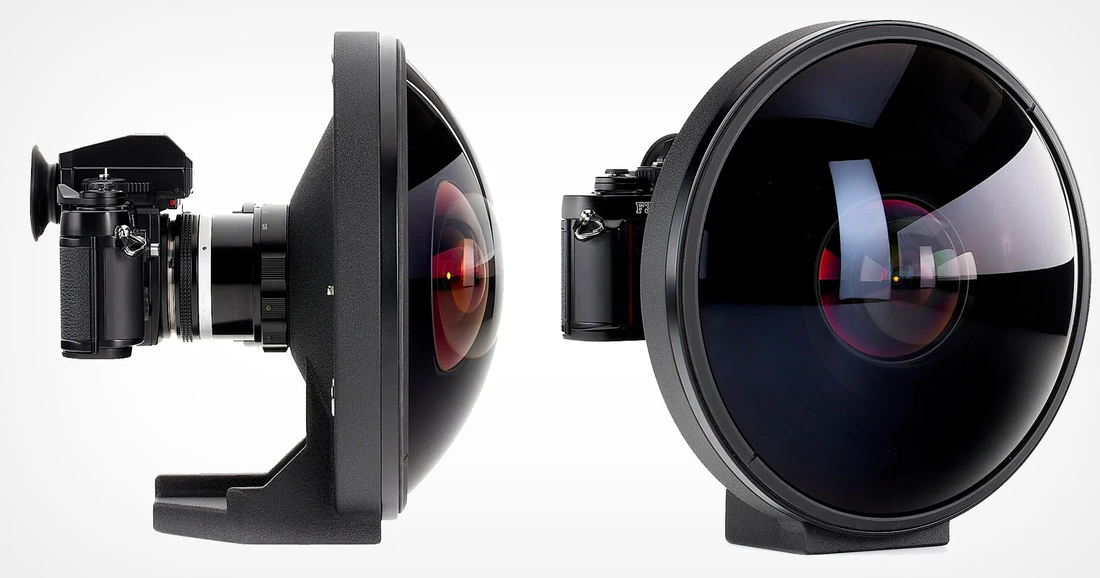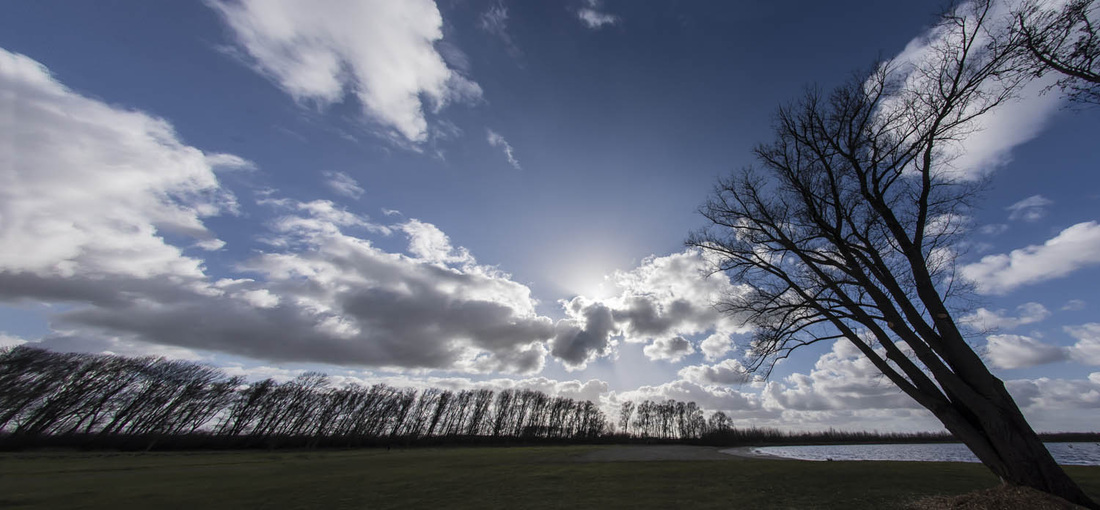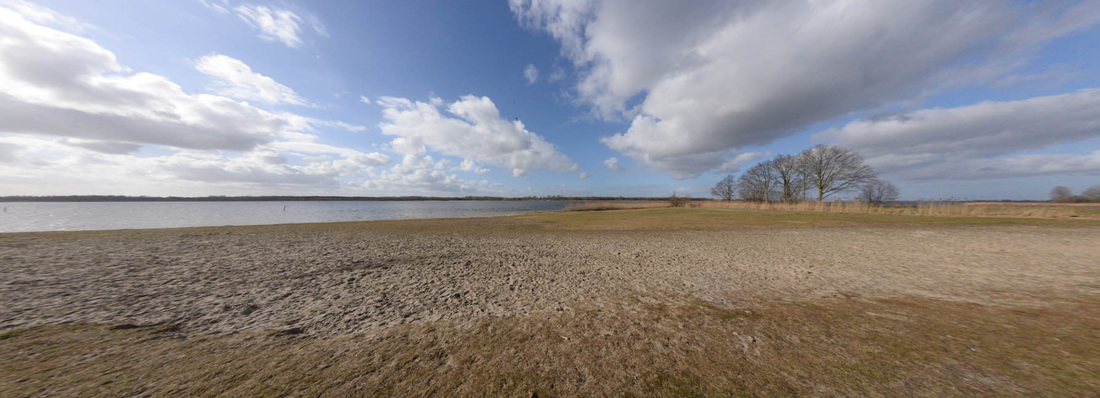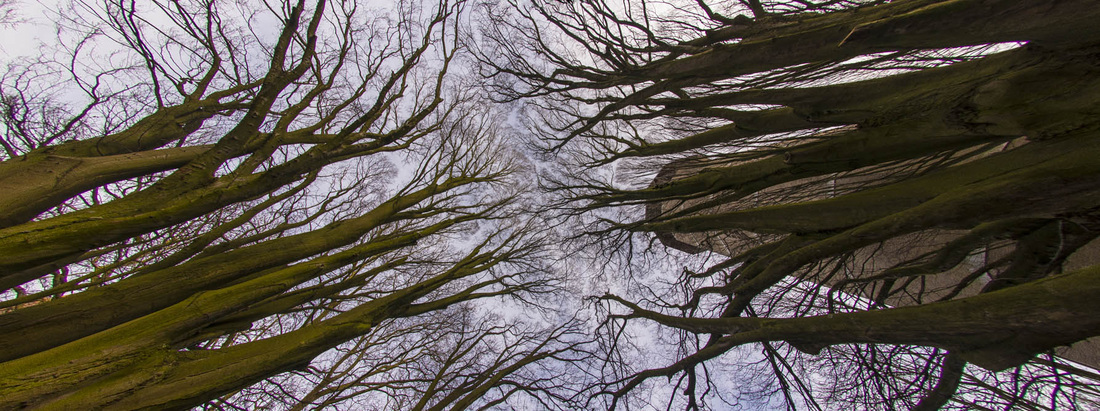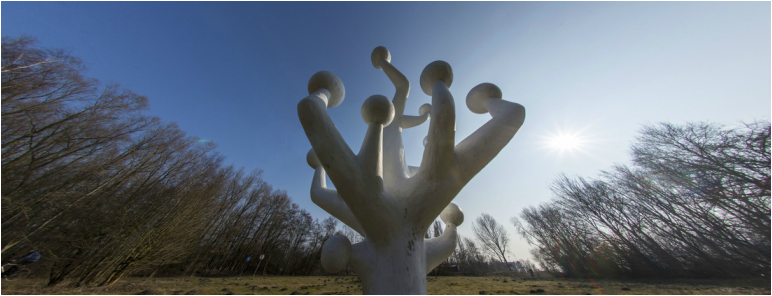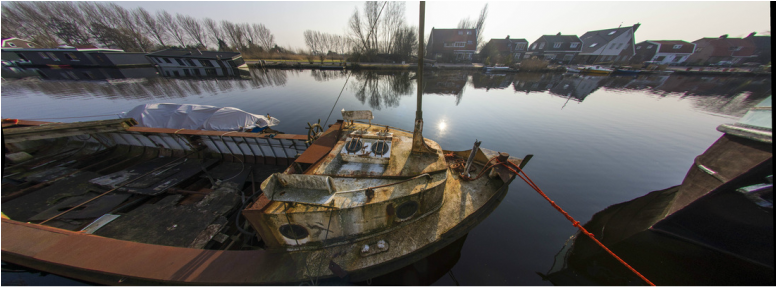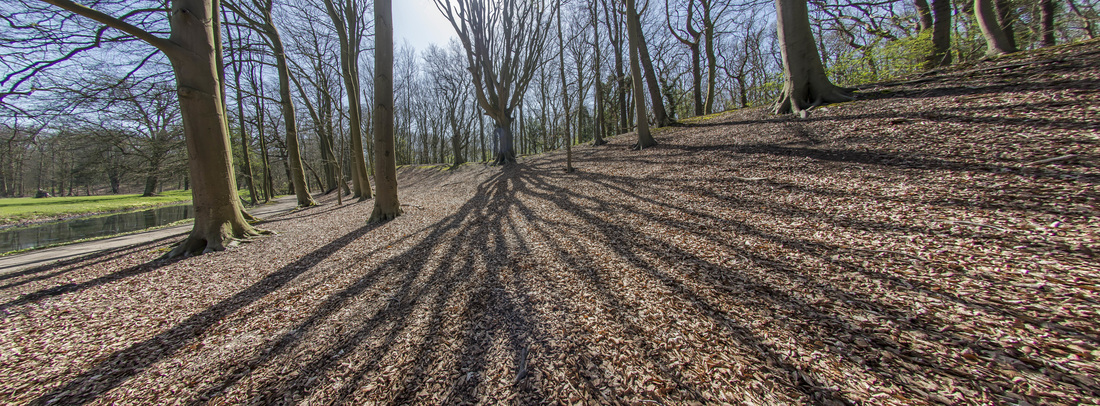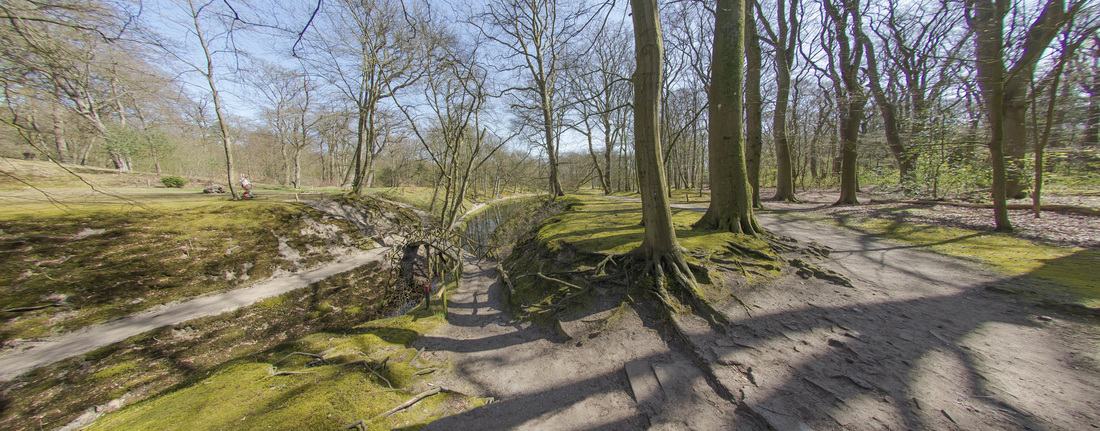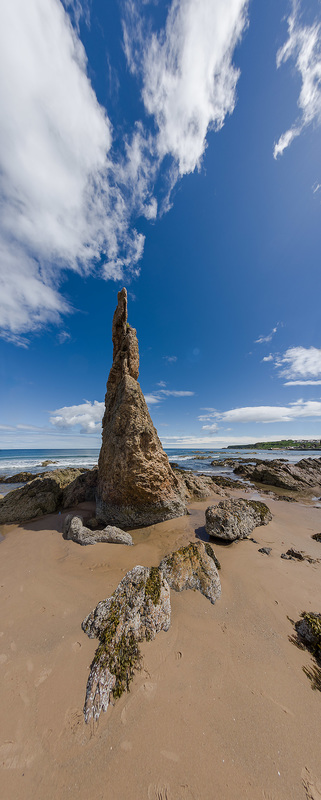Impossible ultra wide-angle
I have got four fisheye lenses, two 360 camera's, some twenty wide angle lenses and tree wide tilt/shift lenses. So you can call me a wide angle junky. As such, am interested in extreme wide perspective perceptions and therefor in ultra wide angle lenses.
The most extreme field of view lenses are fisheye lenses.
The rarest of them all is the Nikkor 6mm f2.8 introduced in 1972. Four decades long it was the wides angle of all lenses ever made; an astonishing 220°, which means the lens actually looks behind itself. Only a handful of this scientific circular bulky fisheyes of 5Kg where made till 1998 and nowadays a second hand rarely shows up in auctions and will cost up to $160.000 or more. I managed to obtain the slightly less rare Nikkor 8mm f2.8 fisheye on Ebay only in the last 7 seconds of the auction. This lens, made between the seventies and the nineties, is still one of the best 180° fisheye lenses ever made.
BTW, the first 8mm Nikkor is also known as the eye of the HAL 9000 computer in Kubrick's 2001: a Space Odyssey.
Around 2014 360° video and VR panoramic photography became popular. A range of 360° camera rigs and extreme fisheye lenses were introduced like The Ozo with eight fisheyes or the astonishing 280° Etaniya fisheye. Have a look at my first results in 360° VR photo's and video Here made with a simple Theta S.
A fisheye differs from a rectilinear wide-angle lens by its curved deformations. All lines of the XYZ axes have two vanishing points. X and Z both two on the horizon and Y one in the nadir and one in the zenit. The perspective distortion is based on 6 vanishing points. Therefore all lines, except the centred horizontal and vertical on eye level, have to be curved in order to meet those two vanishing points.
An other exception is when a vanishing point is exactly in the middle. The radial lines are straight as well.
Human vision is actually fish eye vision. When looking straight ahead we see approximate 90° to each side as well. But the image is projected inside our spherical eye and therefor we do not perceive the curved distortion when projected on a flat surface as a sensor, film of photographic paper.
'How The West Was Won' was filmed in Cinerama, offering a field of view of 146° on a curved screen using 3 projectors and filmed with 3 camera's. This complex stitched and anamorphic projection showed straight vertical lines, but curved horizontal lines in order to meet those two vanishing points, but the curved lines appear straight on the curved screen. It is the same cylindrical distortion as the multi image based panorama mode on a nowadays consumer photo camera.
Rectilinear wide angle lenses have per definition one vanishing point per axis, tree vanishing points in total, enabling straight lines but therefore never can reach an angle as wide as the 180of an fisheye. Actually, the first prime ultra wide-angle lens was the also a Nikkor, the very rare 13mm with an angle of 118°. Designed in the early seventies and only 350 where made to special order of this 'holy grail' of lenses.
Voigtländer introduced in 2016 a 10mm Hyperwide Heliar, reaching an astonishing angle of 130°. As a wide angle junky I had to have one. It was the first time that I had to buy a body for a lens (as it is not available as DSLR Nikon mount). So I continued with the Sony A7 system cameras. As of 2020, the Laowa 9mm f/5.6 lens is the world's widest rectilinear lens (135°) for full frame cameras. Laowa also introduced the widest zoomlens, the 10-18mm f4.5. For sure I had to have those two as well. Laowa has also introduced a 7,5mm Cine lens, but with an angle of 'only' 123° it isn't wider as 135° of the 9mm. Much wider for a rectangular wide angle is probably technical not possible due to vignetting and blurring caused by the increasing steep angle of projection at the edges. 180° is for a rectilinear lens even in theory not possible as a straight line other as the horizon can't meet the two vanishing points on a flat surface.
The only other physical way of obtaining a little wider, ultra wide-angle view is in pinhole photography (camera obscura), though the vignetting in pinhole is a severe limitation as well. Therefore impossible ultra wide-angle rectilinearphotographs, with an angle of view wider than possible with available physical lenses, does have my interest. The only way to create those is by means of remapping fisheye photos by dedicated software like DxO Labs. An other way is making an equirectangular projection of a fisheye photo (see my Equirectangulars that are the base for 360 panoramas and my hyperbolics)
Here I show my first experiments with a Nikkor 16mm 180° full-frame fisheye remapped into extreme ultra wide-angle pictures of approximately 160°, which is optically not achievable.
Strand Nulde, Strand Horst, Gemeente museum Den Haag - de Stijl - Miniaturendepot,
Water tower Zwolle, 5 impressions of the 'Nieuw & Meer' artist studio centre, two forrest-scapes of Elswoud and a vertical rock in Cullen, Scotland.

